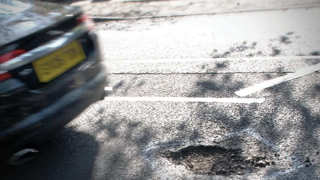The proportion of electric vehicles (EVs) running out of charge over the past few years has fallen by more than 70%, according to the AA.
The number of ‘out of charge’ EV breakdowns was running at 8% of all EV breakdowns four years ago and dropped to 4% of breakdowns last year. This year the figures have dropped further and are running at just 2.1% of EV breakdowns.
Year to date, the AA has dealt with 39,109 EV breakdowns which is equal to just 2.86% of total breakdown workload including petrol and diesel vehicles.
In May this year 2.83% of our breakdowns were EV, which equates to 7,428 individual callouts.
EVs out of charge were less than 2% for the first time in May, at 1.8% of our total EV workload, which equated to 135 breakdowns.
AA president Edmund King said: “Our data on ‘out of charge’ EVs clearly shows ‘charging anxiety’ does not match the reality.
“The 70% drop in out of charge breakdowns is a clear sign that range, infrastructure, and education are improving.”
King believes that the proportion of EVs running out of charge has dropped dramatically due to most new EVs now have longer ranges, the public charging network is more reliable and constantly growing, while there has also been growth in the provision of domestic and work-place chargers, and drivers are better informed and receive more help on when, where, and how to charge.
According to Zapmap, at the end of April 2023, there were 42,566 electric vehicle charging points in the UK, across 24,909 charging locations.
This represents a 37% increase in the total number of charging devices since April 2022.
Melanie Shufflebotham, chief operating officer at Zapmap, said: “The dramatic fall in the number of EV breakdowns caused by running out of charge is clear evidence that ‘charging anxiety’ should no longer be a key concern for drivers.
“At the end of May this year there were 43,626 charging points across the UK, across 25,413 charging locations, representing a massive 38% increase since May 2022.
“There’s no doubt that the infrastructure is improving all the time, and hopefully this welcome report will encourage even more drivers to make the switch to cleaner and greener transport.”
The AA says that in many ‘out of charge’ cases the vehicle is not actually out of charge, but the AA has been called out as the EV is low on charge.
In Norway, which has a much higher concentration of EVs than the UK, the percentage of out of charges is just 1%.
Running out of petrol/diesel is also consistently 1% of the AA’s workload, and the organisation believes that EVs will end up at this same run rate in time.
The top one third of breakdowns for EVs are the same faults as with petrol or diesel cars – 12v battery problems and tyres.
Other EV faults are quite different and cover things such as charging equipment, warning lights, battery monitoring systems or key transponders.























Login to comment
Comments
No comments have been made yet.